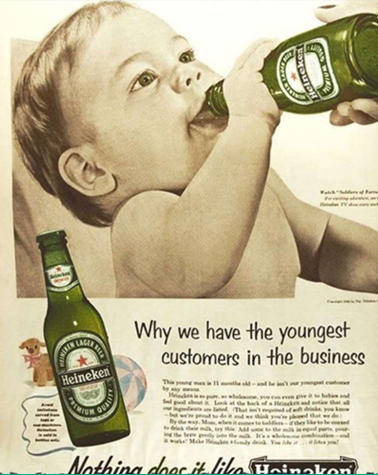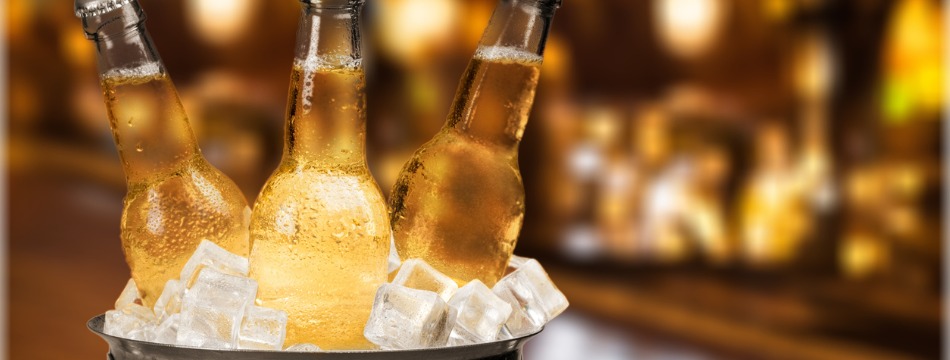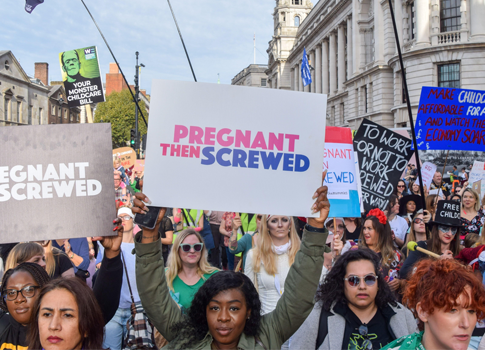Unsure exactly what the alcohol industry can, can’t and can maybe do when it comes to advertising, well I’m here to help having recently attended a seminar run by the IPA to understand excatly that. Although, disclaimer…there are a lot of grey areas!
Alcohol is one of the longest serving categories in advertising. Ads for Beers, Whiskies, Wines and more have been around since advertising’s inception. ‘Back in the day’ there were minimal rules and regulations around what could be claimed, said or done in an ad. However, as is the way of the world, the times have rapidly moved on past the days of Lobatt’s pale ale claiming it was a ‘Real Man’s Drink’. In this blog, I outline some of the key regulations that are placed on the alcohol industry when it comes to advertising, which I hope can be used as a guide for all those wondering about what passes as legal creative.
What counts as an alcoholic ad?
Before I dive into what is and isn’t allowed, it’s worth addressing what actually counts as an alcohol ad…this is where we encounter our first grey area.
Alcohol restrictions apply to any ad that mentions, refers to or contains any alcohol in the creative. This can vary from out and out booze brands, to a restaurant advertising a new menu. The brand itself doesn’t have to be an alcohol brand, to the extent that ads for movies i.e. The Hangover is subject to alcohol regulations too.
There is then the murky waters of low and non alc drinks which are subject to separate rules. Anything under 0.5% ABV is considered non alc, with anything between 0.5% and 1.2% being a low alc drink. Non alc drinks are subject to different rules and regulations, but can’t be seen to promote the awareness of the alcoholic version. For example, using the same slogan or being seen to have a halo benefit on the alcohol brand means you are subject to regulation.
What advertising regulations must an alcohol brand follow?
There are two golden rules of advertising in the alcohol category:
- Advertising alcohol should be socially responsible
- No under 18s allowed
When deciding what is socially responsible there is some scope for interpretation, but there are a few key areas:
- You cannot promote excessive consumption of alcohol – Despite increased consumption spelling increased profits for FMCG brands, in this case, promoting excessive consumption won’t be allowed in your advertising.
- No therapeutic claims of alcohol – Unfortunately for alcohol brands, suggesting that alcohol has a calming or therapeutic affect is a no go. On a similar note, promoting alcohol as a healthy product also won’t fly. Brands should avoid showing alcohol as a healthy option with less calories, carbs, etc…
- Alcohol ads cannot be seen to promote success – A drink or two could settle the nerves in certain situations, however claiming so is deemed irresponsible for drinks brands. Unfortunately for them, ‘Dutch courage’ is considered a harmful side effect.
- You cannot promote the consumption of alcohol in unwise or dangerous locations – Promoting alcohol in certain environments will get your ad pulled. There are obvious and more ambiguous examples of these, which both face the same judgement. On the one hand, promoting consumption in any vehicle or extreme sporting environment would not be allowed. With today’s regulations, that could have led to Guinness’ surfer – one of the most iconic ads ever – not being allowed to run. On the other end of the spectrum, ads that promote drinking in the workplace won’t be allowed to run. The IPA example of a Corney and Barrow email campaign that quoted having office meetings in one of their bars and buying Beaujolais in the same email. Seems innocuous but the rules apply the same to this scenario as they would to someone drinking in a car.
What age restrictions are placed on ads that feature alcohol?
In terms of age restrictions, it isn’t as straight forward as not targeting or featuring under 18s in the ads. In fact, you can’t feature anyone in an ad who seems under 25. Similar to outraged 25 year olds still being asked for ID in the supermarket, any ads featuring people that could be considered under 25 will be pulled. Unfortunately for alcohol brands, playing to people’s humour with a baby on the pints isn’t allowed these days. See the below Heineken example if you think I’m joking:

Naturally there is subjectivity again with this, but I think we will all agree that 11 months old is a touch too far. Sorry Heineken!
Similar to featuring under 25s in the ad, the ad itself shouldn’t be considered to appeal to under 18s. Ads are not allowed to target u18s, however it can be expected that there will be an element of collateral damage, for example a child walking in on their parents watching TV after 9pm. In order to safeguard against this, adverts can’t seem to appeal to those exposed to the ad that are under 18.
With the rise of gaming enticing brands in left, right and centre, we find ourselves with yet another grey area. Without picking on Heineken too much, their Heineken Silver gamified ad would sit firmly in this grey area, falling on the side of legal. However in this situation, where exactly do we draw the line? Advertising beer at a football world cup is guaranteed to hit millions of children? Getting celebrities like Justin Bieber or Ryan Reynolds to advertise alcohol is bound to reach similar amounts of under 18s. Suddenly, if restrictions became any more stringent then we could see a domino effect on all sorts of avenues for booze brands.
How can brands avoid reaching under 18s with their ads?
As mentioned before, targeting under 18s is a no go so the ASA have released a few steps to take in order to avoid this:
- The first layer that should be implemented is naturally age based targeting. This should be the absolute foundation of any campaign.
- Step two is to combine this with interest targeting in order to exclude children. An example of this could be selecting keywords/interests that skew adult, or deselecting interests that are more prone to under 18s.
- Next, you should layer interests in order to refine your adult audience. For example, when using broad interest targeting like Football, target an interest in football ‘AND’ house buying rather than ‘OR’.
- Finally, you should use all targeting tools available on a platform, and any additional tools available in order to keep your ads from under 18s.
Naturally there are limitations with the above. Brands that don’t have national distribution or tightly proximity targets won’t be able to add infinite layers of audience targeting due to a lack of scale when talking about digital platforms. However, for brands with national distribution it offers a strong safe guarding process.
Given the complexity and obscurity of the regulations it would always be advised that you have open and honest conversations with your clients when dealing with any contentious issues. The IPA legal team are always there to help in these situations, or you can reach out to us at Total Media and we would be happy to lead this process for you.






